Introduction

Spices were an important commodity in the Middle Ages with an allure and mythology dating back to Antiquity. Spices were expensive and a sign of status in the Roman Empire. They were consumed in large quantities by the wealthiest citizens. Like many other goods, spices were easy to transport because of safe and maintained routes controlled by the Romans. When the Empire fell, local powers took control of routes and travel became more difficult as these entities engaged in war, embraced different religions, and neglected maintenance of old Roman roads. As a result, for several centuries in the early Middle Ages, people in Western Europe lacked consistent access to spices.
After religious crusaders tasted the cuisines of the Middle East in the high Middle Ages, they renewed a widespread European interest in spices for culinary and medicinal applications. Merchants procured a wide range of spices for consumers, including pepper, ginger, cinnamon, clove, and saffron, as well as the now-obscure spices like grains of paradise and spikenard. Sugar was also used as a spice during the Middle Ages. Spices again became revered luxury items and status symbols across Europe. European merchants sought out spices from Asia, traveling dangerous routes through the Middle East and Africa. Traders were faced with many challenges, including physical danger and constant economic strain from local tariffs and taxes. Because spices were from distant lands and European consumers had no direct access to their sources, stories about spice origins flourished. Contemporary authors recorded myths about pepper trees guarded by serpents and cinnamon requiring harvest from nests of fantastical birds built on perilous cliffs. These legends only added to their mystique and justified their expense.
Muslims controlled all routes of access to spices in the East from Europe. This presented a challenge for Christian and Jewish traders from the West, as there was perpetual tensions and outright warfare between Christian and Muslim powers. Muslims dominated not only land routes which spanned across the Middle East and northern Africa to Pakistan and western India, but also maritime routes throughout the Indian Ocean. In 1453, Italian merchants were largely forced to stop trading spices through combined land and sea routes. In that year the Ottoman Empire conquered Constantinople, a city at the convergence of all land routes to the spice centers of the East, and began levying prohibitively expensive tariffs on goods transported through the city. In an effort to find new seaways to Asia, kingdoms sponsored exploratory expeditions. Some explorers discovered new water routes to China and India, re-opening trade of spices and other goods, while others claimed land and resources in the New World.
Essential Questions
- Why were spices so valuable in medieval Europe? Who determined the value?
- How is the value of spices different from the price of spices? How did the value impact prices?
- How were spices used by medieval Europeans? How does this differ from the use of spices today?
Luxurious Consumption

Throughout the Middle Ages, spices were a status symbol and sign of luxury. Only the wealthiest could afford large quantities of spices to use for culinary purposes. Meals in noble households were ostentatious affairs, even small and relatively private meals. Consider what spices do in a cooked dish: they color food, flavor food, and make food more aromatic. Spices, then, enhance the senses of sight, taste, and smell. In the context of a medieval meal, especially a feast intended to impress guests, spices played a major role. Fountains flowing with spiced wine might be installed in or near a great hall; this lavish service of wine would scent an entire room with spices like cloves, grains of paradise, ginger, and cinnamon. Nearly any dish, whether roasted, stewed, or baked, could include an impressive array of these imported spices. In the image above of a meal from the fifteenth-century prayerbook Heures à l’usage de Rome, two wealthy diners share a private meal. Meals in noble households were an opportunity to display wealth and power through the number of servants, table decoration, and the food itself. Dishes served at a noble meal would be heavily spiced for taste and to exhibit wealth to guests. The diners are being served a pie, which in the Middle Ages consisted of a meat or fish mixture baked in a decorated pastry crust. This mixture would undoubtedly include many spices. The exterior of the pie would often be brushed with a wash with saffron, a remarkably expensive spice made from the hand-picked threads of crocus flowers, turning the finished dish into a gleaming, golden work of art.
Wealthy Ancient Romans used spices copiously in their foods, a tradition that continued for many more centuries. In the two recipes excerpted here from the most renowned cookbook in Late Antiquity, De re coquinaria, we see the use of spices in both a pear custard and a roasted chicken. The recipes in this cookbook reflect Roman cuisine between the first and fourth centuries, but continued to be copied into the Renaissance. Note the prevalence of spices in each recipe. Pepper and cumin were the most common combination, as they are here, and the chicken dish also includes spiced wine as another ingredient. While the dishes of De re coquinaria fell out of favor in medieval Europe, the cookbook was still copied by manuscript scribes and was printed several times during the Renaissance.
Selection: Apicius, De re culinaria (Basel, 1541).
Translation of experts from Apicius, De re culinaria:
Patina de Piris, 38: Patina of pears: core and boil the pears, pound them with pepper, cumin, honey, passum, liquamen, and a little oil. Add eggs to make a patina, sprinkle with pepper and serve.
Porcellus Caesianus, 92: Celsinian piglet: dress the piglet. Insert (a mixture of) pepper, rue, onion, savory, under its skin and pour eggs into the ear cavity. Blend a sauce of pepper, liquamen, a little wine in a cup and serve it up. Roast piglet: pound pepper, rue, savory, onion, the yolks of hard boiled-eggs, liquamen, wine, oil, spiced wine; bring it to the boil. Pour the finished sauce over the piglet in a serving dish and serve.
Translation from Christopher Grocock and Sally Grainger, Apicius: A Critical Edition with an Introduction and English Translation (Totnes, Devon, UK: Prospect Books, 2006), 276–7
Spices were not solely culinary ingredients; they were also used for their aromatic properties in perfumes and incense. In a time when bathing was infrequent, streets were not paved, and animal dung was a constant presence, pleasant aromas were highly valued. For example, frankincense and myrrh were prized for their aromas. Additionally, these spices were closely tied to the Christian tradition. In the image of the three kings visiting the newborn Christ Child on Epiphany pictured in the Introduction, the close of the Christmas season, frankincense and myrrh are presented as gifts equal to gold. These valuable spices were also used in medical applications and as incense.
Questions to Consider:
- What details in the images help identify spices as an expensive luxury item? Who has the most direct access to spices in these two images?
- What do you notice about the quantities of spices used in the recipes? Does the absence of seemingly key information give a cook more or less flexibility in choosing how to prepare a dish? Might the lack of specific quantities mean that taste preferences and the ability to afford more spices affected the final product?
- Looking ahead in the collection, would the consumption of spices be beneficial or solely a decision based on taste and wealth?
- The use of spices in medieval Europe’s cuisine is very different from modern Western culinary practices. However, there are modern parallels. Do you recognize a similarly heavy use of spices in any other modern cuisines?
The Value of Spices
The value of spices was determined not only by their taste and status as luxury items, but also their medical properties and the fantastic legends attached to their production. Spices were believed to have important medical qualities; spices were ingredients in medieval pharmaceuticals. Apothecaries, the medieval equivalent to pharmacies, were stocked with supplies of spices which were then carefully mixed with other spices, minerals, and animal products to create an array of medications to be ingested by or applied on a patient. Medieval and renaissance writers devoted many pages to the benefits of spices, including the excerpts which describe cinnamon, ginger, nutmeg, and pepper.

Some spices were legitimately difficult to harvest. Musk, an oil from the scent glands of a Central Eurasian deer, and ambergris, a waxy substance produced by the digestive system of the sperm whale, were two such spices. Others, however, were more easily procured. Yet merchants assigned bizarre stories to other spices to heighten their value for European consumers. Since most people in the medieval West had no contact with the Far East and the actual origins of spices, these myths persisted for centuries. The two most notable of these are tied to pepper and cinnamon. Pepper was said to be guarded by serpents which had to be chased away by fire. This fire turned fresh, white peppercorns into black, wrinkled spices. Walter Baley, a respected English physician, mentions this legend in the excerpt from his treatise on pepper, pictured above. In this selection, Baley debunks the legend of burning pepper trees but still considers pepper a valuable commodity. Here he describes several varieties.
Cinnamon had a similarly wild story. Merchants claimed that a mythical bird called a Cinnamologus made nests out of cinnamon sticks in Arabia. These nests were built on perilous cliffs, and people had to drive the birds from these nests in order to harvest the cinnamon. In De honesta voluptate, Platina details the benefits of a range of foods, including spices. This excerpt includes information about cinnamon, ginger, and nutmeg. Notably, Platina disputes the mythical origins of cinnamon, favoring a more realistic description.
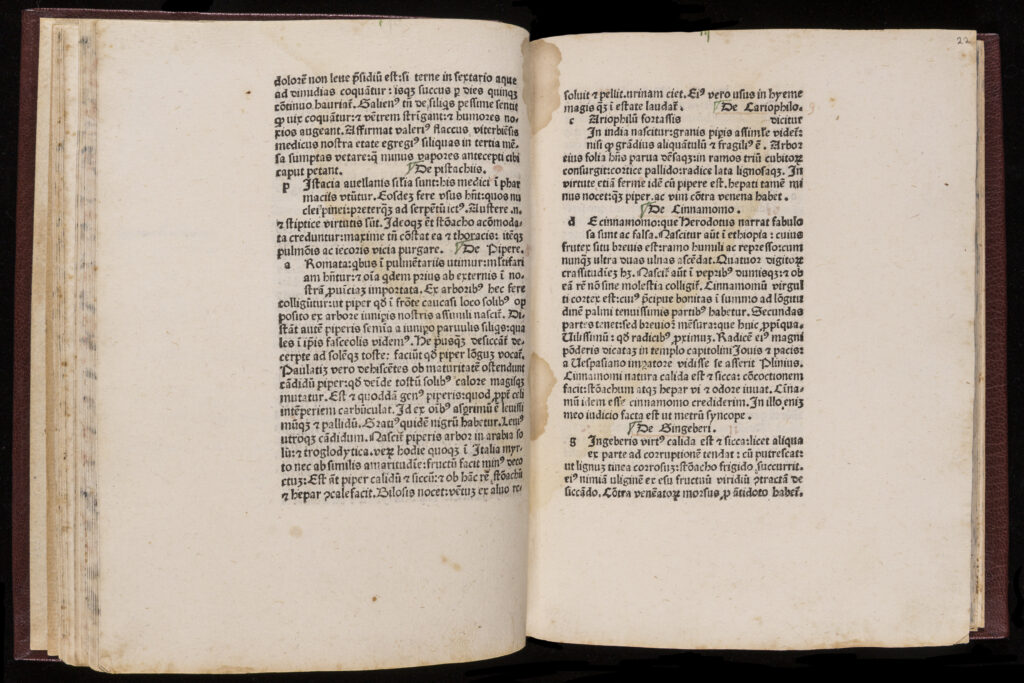
Translation of excerpt from Platina, De honesta voluptate:
On Cinnamon: What Herodotus tells about cinnamon is all stories and indeed false. It grows in Ethiopia, and its trunk is short with low and close branching; although it never rises on a site above two ells, it has a thickness of four fingers. It grows in thornbushes and brambles, and therefore it is not gathered without trouble. The bark of the twig is the cinnamon. Its special goodness is considered to be at the top, with the tenderest parts extending the length of a span. It has second-best parts, but that part which is near to this top os of a shorter length, while that which is near the root is really poor. Pliny claims to have seen a root of it of great weight, dedicated by the Emperor Vespasian in the temple of Capitoline Jupiter and Peace.
The nature of cinnamon is warm and dry, brings about digestion and aids the stomach and liver with its force and fragrance. I would think that cinnamon is the same as cinnamomum, for in my judgment, in the former syncope has occurred in poetry.
On Ginger: The quality of ginger is warm and dry, but it happens to tend toward corruption, in part because it rots like wood corroded by worms. It helps a chilled stomach by drying out its excessive moisture, contracted by eating green fruit. It is also considered an antidote against the bites of poisonous creatures.
On Nutmeg: The nut which dealers in paints call muscata is warm and dry. It helps the human body by its force and fragrance, sharpens weakened vision of the eyes, settles vomit, and induces appetite by soothing stomach and liver. All these spices have aromatic force, whether whole or ground, separate or mixed, and they are especially suitable for people to eat.
Translation from Mary Ella Milham, ed., Platina, on Right Pleasure and Good Health: A Critical Edition and Translation of De Honesta Voluptate Et Valetudine (Tempe, AZ: Medieval & Renaissance Texts & Studies, 1998), 181 and 183.
Questions to Consider:
- What sorts of medical ailments could spices relieve? How were they beneficial? In Platina’s text, do different spices accomplish different things?
- How would strange and fantastic legends about spice origins boost their value and price?
- Pepper is discussed in many other sources in this collection. How did people view pepper over time? Did people use it differently over time? Did people value it differently over time?
A Profitable Venture
Spice merchants could reap enormous profits, but they also faced dangerous journeys to procure their goods. Whether traveling by land or sea, they faced perils like pirates and raiders, religious and political conflict, and accidents like shipwrecks. Traders furthermore faced financial strain to move spices from Eastern points of trade to Europe. Whenever spices were transported through different kingdoms or points of trade, merchants had to pay steep tariffs. Depending upon the spice, merchants could charge 50 or 60 percent more in Europe for the spices they bought in the Middle East. Some contemporary accounts state that merchants charged 100 percent more. However, a majority of the markup was due to tariffs, leaving traders with a smaller profit, even as little as 10 percent.
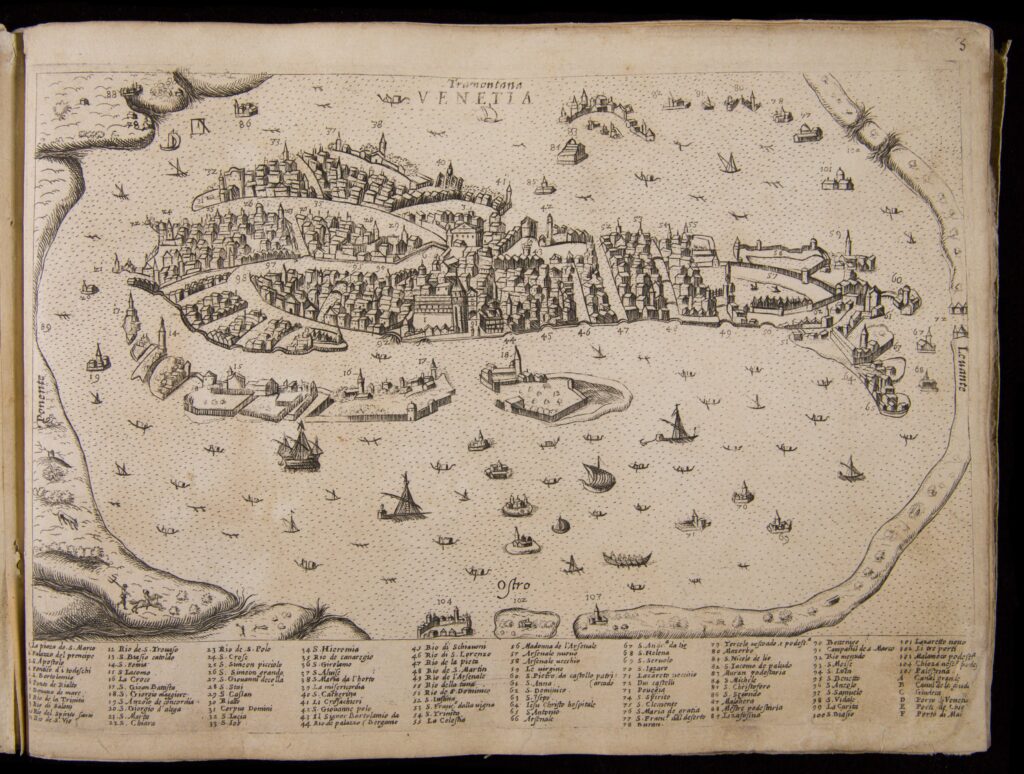
Spices entering the European market were typically transported through Venice. In the map above, the cartographer Camocio depicts Venice in great detail. Ornate palaces, churches, and bridges are connected by a system of waterways, many listed in the key. Venice was located in a prime location in Mediterranean. It was relatively easy to access major gateways to Eastern trade routes like Constantinople (now Istanbul, Turkey); Aleppo, Syria; and Alexandria, Egypt. From the eleventh through the fifteenth century, Venetian merchants ruled the European spice trade. As a result, Venice became an extremely wealthy and powerful city. Such a wealthy city attracted the most talented artisans to produce innovative architecture, artwork, and music.

By the late Middle Ages, thousands of tons of the most common spices were imported into Europe annually through Venice. The value of these spices was approximately the value of a yearly supply of grain for 1.5 million people. In fifteenth-century England, a pound of pepper cost more than two days’ wages by a skilled London craftsman. A pound of cloves cost nearly five days’ wages, while a pound a saffron cost one month’s wages. You can see the cost of pepper in this selection from d’Anghiera’s The decades of the newe worlde or west Indía. Don’t get bogged down by specific monetary values in this description of pepper; observe the long list of tariffs merchants had to pay all along trade routes. Importing spices was very expensive, pushing both prices and profits up. Prices varied throughout Europe and fluctuated over time, but the general idea remained the same: spices were a very expensive ingredient in medieval Europe.
Questions to Consider:
- What are some notable characteristics of the city of Venice? How does the map shape your view of the city? Are there any clues on the map to the city’s wealth?
- The historian Peter Martyr d’Anghiera provides a great amount of detail about pepper in such a short excerpt. What areas in India are known for pepper production? Who has control of trade at different points in the route? Where do merchants have to pay tariffs?
- Drawing upon the sources, what aspects of trade were beneficial for merchants? What aspects of trade were discouraging or detrimental?
Changes in the Renaissance Spice Trade
Italian traders were forced to significantly reduce trade in spices via combined land and sea routes through Constantinople in 1453. In this year, the Ottoman Empire, an Eastern superpower, conquered the city. Since Constantinople was located on major east-west and north-south trade routes, the Ottomans could charge restrictively high taxes on all goods bound for the West.
Selection: Samuel Purchas, Pvrchas His Pilgrimes in Five Bookes (vol. 1) (1625), 734-5, 743.
Because Europeans were denied access to spices though Constantinople, kingdoms began to sponsor the exploration of new routes to India to directly obtain spices. Portugal and Spain, however, were the first to make significant headway. The Portuguese had already begun to explore northern Africa earlier in the 1400s. So, they quickly set out on a possible sea route to India around the southern tip of Africa. Bartolomeu Dias first crossed the Cape of Good Hope in 1488, and in 1497, Vasco da Gama rounded the Cape, continued to the eastern coast of Africa, and sailed across the Indian Ocean to Calicut in south India. At long last, Europeans had direct access to Indian spices without the intervention of Arab traders. By the beginning of the sixteenth century, the Portuguese had complete control of the African sea route. Other explorers attempted alternate routes to India by traveling westward. Christopher Columbus, an explorer for the Spanish crown, was the first of these explorers to reach the New World in 1492 traveling this route, mistaking the Bahamas for the East Indies.
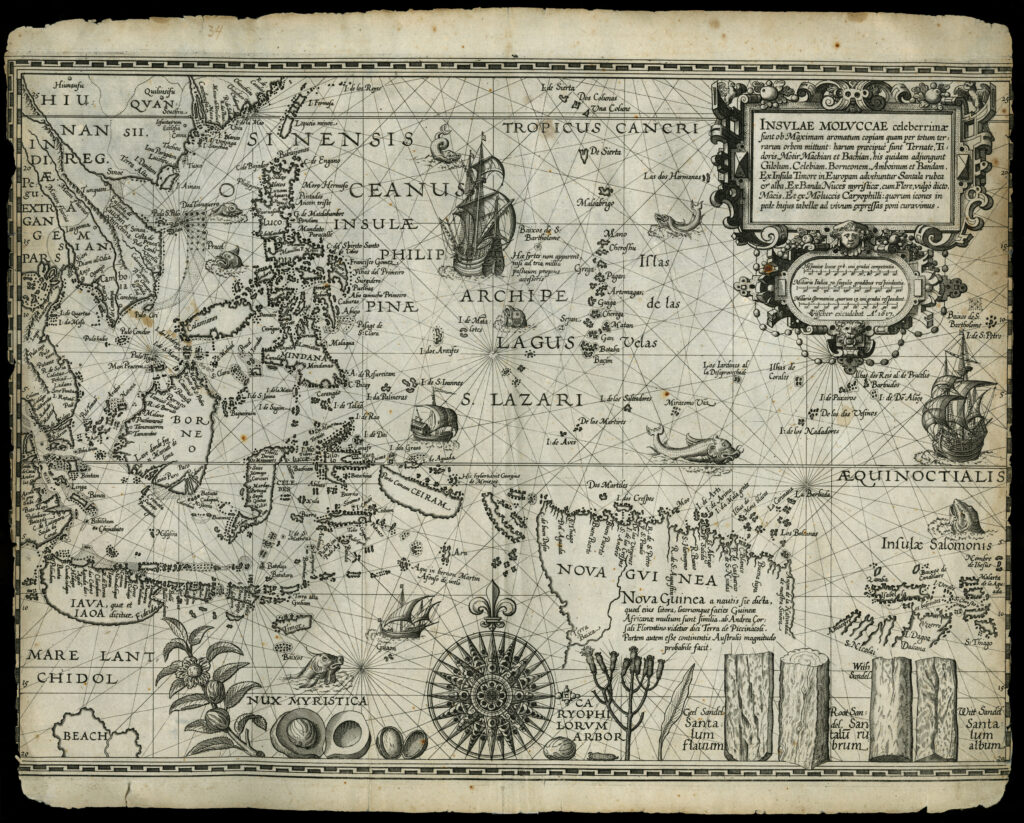
Over the following centuries, consumption of spices declined. Yet they still remained an important commodity. The Dutch struggled, and eventually succeeded at the turn of the seventeenth century, to wrest control of trade from the Portuguese by establishing the Dutch East Indies Company. The map of the East Indies above was originally printed in the late sixteenth century to entice Dutch investors to take control of the region and the spice trade from the Portuguese. Note the spices (nutmeg, cloves, and sandalwood) on the bottom edge. The British East India Company, a direct competitor, was founded at around the same time. The above selection from Pvrchas His Pilgrimes in Five Bookes reprints a treatise n support of the British East India Company by T. Mun. Mun argues for direct trade between England and the East Indies to avoid high tariffs in cities like Aleppo which drove the cost of spices sky high. The goal of these companies was all the same: to establish direct trade with Indian spice producers and keep tariffs as low as possible.
Questions to Consider:
- According to the sources, what were the concerns of merchants and investors involved with the spice trade?
- Compare the total sum spent on spices in Aleppo (page 734) and the total sum in the East Indies (page 735). Which is higher? Why?
- Similarly, compare the total sum spent on spices and indigo before and after the foundation of the British East India Company (page 743). What accounts for the price difference?
- In what ways would this map printed by Visscher appeal to Dutch investors? What details might convince someone to invest in the Dutch East India Company? Is the map visually appealing? Does it include details about the land? What role do the decorations play?


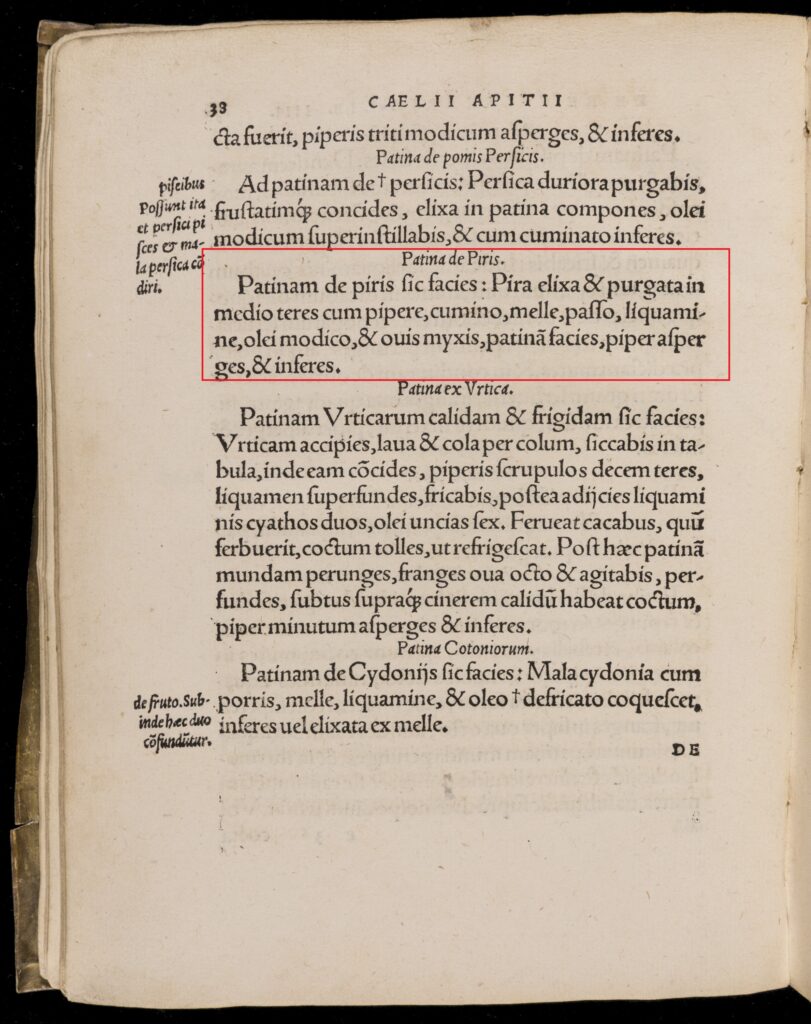
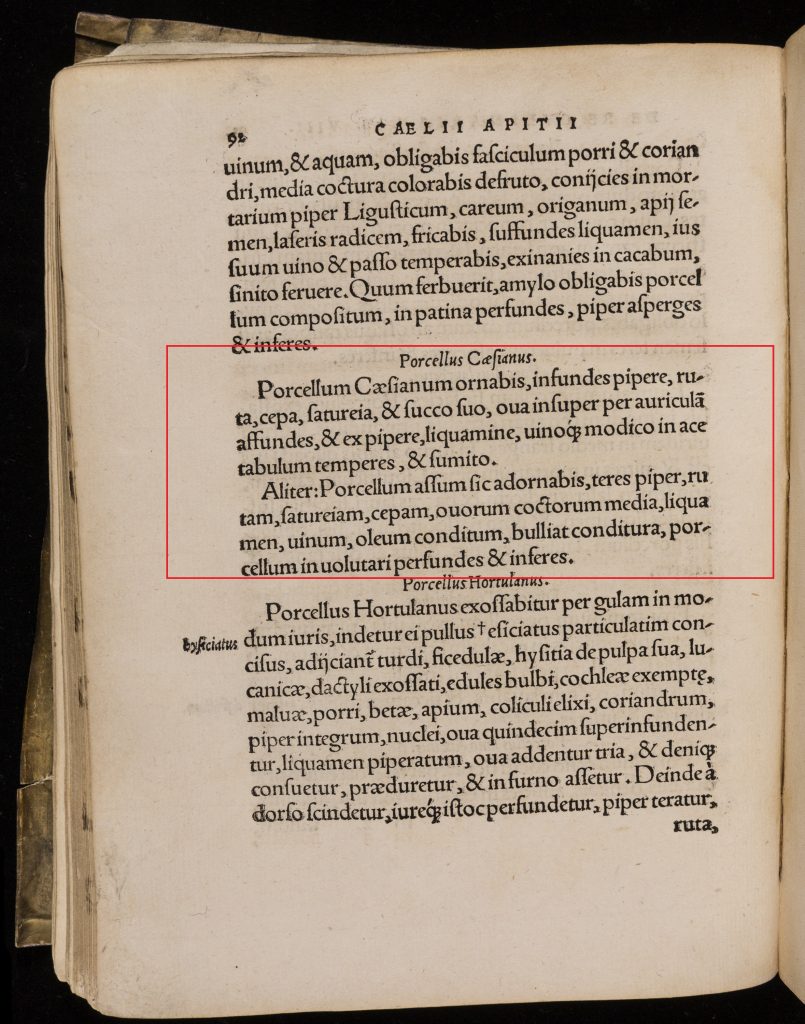




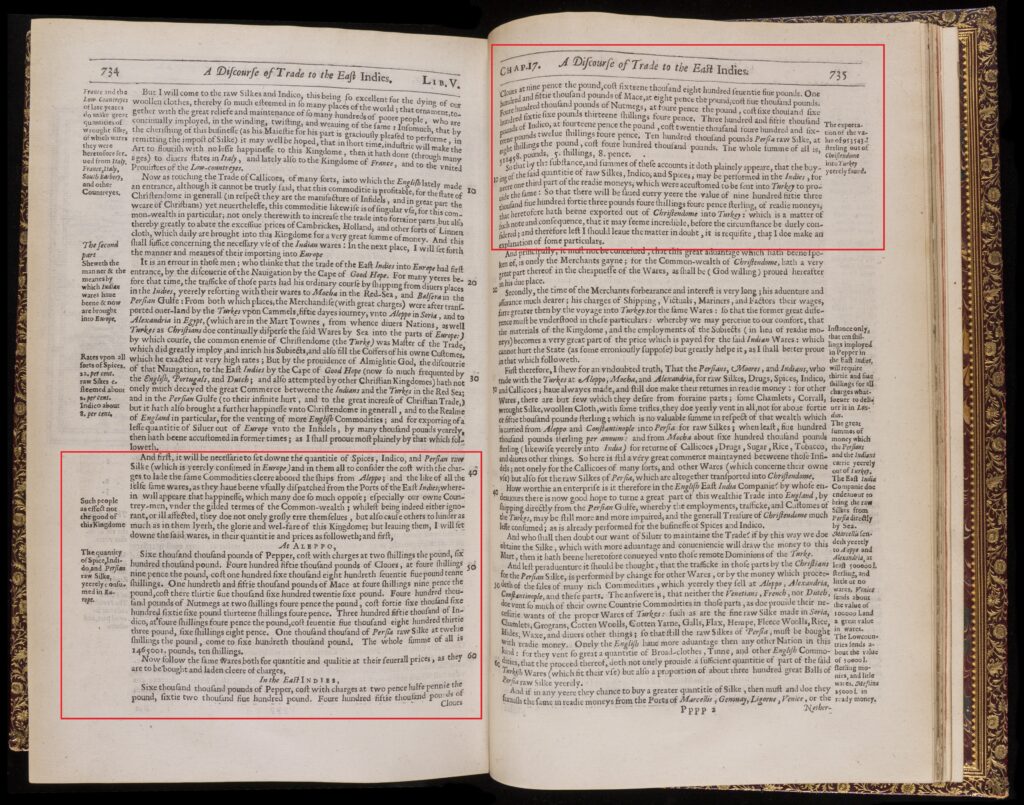


Further Reading
E Ashtor, “Profits from Trade with the Levant in the Fifteenth Century,” Bulletin of the School of Oriental and African Studies, 38 (1975): 250–275.
Paul Freedman, Out of the East: Spices and the Medieval Imagination (New Haven: Yale University Press, 2008).
John Munro, “The Consumption of Spices and Their Costs in Late-Medieval and Early-Modern Europe: Luxuries or Necessities?” https://www.economics.utoronto.ca/munro5/SPICES1.htm.
Jack Turner, “The Spice That Built Venice,” Smithsonian Journeys Quarterly 2 November 2015, http://www.smithsonianmag.com/travel/spice-trade-pepper-venice-180956856/.


